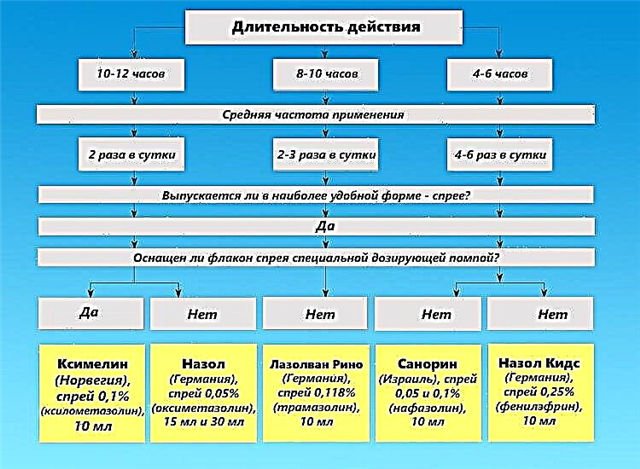A sore throat can be caused by various processes in the body. Since the throat plays an irreplaceable role in the process of breathing, ensures the passage of air, then clarifying these processes is an important factor. Pathologies in which the throat is very sore can be caused by both a bacterial and a viral pathogen, caused by the effect of an allergic component. In this case, a severe sore throat can be a manifestation of a common acute viral infection, or caused by a surgical pathology that requires urgent action.
Viral infections
 In order for the patient to receive qualified assistance, all accompanying complaints must be collected, an objective examination carried out. In many cases, a more accurate diagnosis of sore throat requires laboratory diagnostics. It consists in bacteriological examination of a smear from the throat, conducting clinical studies.
In order for the patient to receive qualified assistance, all accompanying complaints must be collected, an objective examination carried out. In many cases, a more accurate diagnosis of sore throat requires laboratory diagnostics. It consists in bacteriological examination of a smear from the throat, conducting clinical studies.
The most common viral infections that cause sore throat are:
- flu;
- adenovirus infection;
- rhinovirus infection;
- parainfluenza;
- enterovirus infection;
- Infectious mononucleosis.
Sore throat can also characterize childhood infections, measles, chickenpox, scarlet fever, rubella. Being the most common diseases among children under 12 years of age, these infections are not uncommon in adults. The presence of a characteristic rash on the skin contributes to the clarification of the diagnosis.
There are about 200 different viruses that can lead to the development of acute respiratory viral infection. Diseases caused by a different virus are combined into one large group, ARVI, based on the commonality of symptoms, treatment tactics. Influenza is a somewhat isolated infection in this group due to a more severe course, the possibility of developing dangerous complications.
ARVI
Severe sore throat is a constant symptom of ARVI. It occurs in the first hours after the disease. Patients describe the pain syndrome as tickling, scratching, less often they describe that the throat hurts terribly. Additional symptoms are
- sharp malaise;
- dry cough;
- runny nose;
- headache;
- aches in muscles, joints;
- soreness when moving the eyeballs;
- an increase in body temperature up to 38-39 degrees.
 Taking into account the autumn-winter period, the worsened epidemiological situation, the diagnosis of the disease does not cause difficulties. Compliance with bed rest, abundant warm drinks, symptomatic treatment will help to normalize the situation in the next 5-7 days.
Taking into account the autumn-winter period, the worsened epidemiological situation, the diagnosis of the disease does not cause difficulties. Compliance with bed rest, abundant warm drinks, symptomatic treatment will help to normalize the situation in the next 5-7 days.
Exposure to enterovirus can lead to the development of herpetic sore throat, characterized by the presence of typical rashes on the mucous membrane of the tonsils, hard and soft palate, and arches.
Herpetic sore throat is characterized by unbearable sore throat, fever up to 40 degrees.
The disease is most typical for children who become moody, sleep poorly, and refuse to eat.
An objective examination of the pharynx helps to clarify the diagnosis. Pharyngoscopy allows you to detect reddish papular elements, which after a few days are transformed into pustular.
It should be noted that the duration of the disease can be about 10 days, during which the patient may develop new rashes, accompanied by an increase in temperature.
Infectious mononucleosis
Infectious mononucleosis is also most common in children under 12 years of age, although it also occurs in adult patients. Despite the variety of symptoms, sore throat is a persistent symptom of the disease. In this case, the pharyngoscopic picture does not allow to reveal special signs, except for redness of the tonsils and the mucous membrane of the throat. Diagnostic help in this case is the presence of additional symptoms:
- an increase in temperature for a long time;
- an increase not only in regional lymph nodes, but also in axillary, inguinal, posterior cervical;
- the presence of skin rashes;
- in rare cases - an enlarged liver and spleen.
In this case, laboratory diagnostics is of great importance, which makes it possible to detect atypical cells, mononuclear cells, and an increase in the level of lymphocytes in the general blood test.
Diphtheria
Pharyngeal diphtheria is one of the most severe infectious diseases occurring with the defeat of the tonsils, pronounced symptoms of intoxication. Causative agent  her is a diphtheria bacillus. The source of infection is a sick patient or carrier who is dangerous for three months after the regression of clinical symptoms. You can get sick by airborne droplets, alimentary. Due to the fact that in recent decades, work has been systematically carried out on active immunization, the incidence of diphtheria has sharply decreased.
her is a diphtheria bacillus. The source of infection is a sick patient or carrier who is dangerous for three months after the regression of clinical symptoms. You can get sick by airborne droplets, alimentary. Due to the fact that in recent decades, work has been systematically carried out on active immunization, the incidence of diphtheria has sharply decreased.
The main complaints of patients are a terrible sore throat and a sharp malaise caused by an increase in body temperature up to 40 degrees, a headache. Currently, the most common is the toxic form of diphtheria, in which symptoms of intoxication rapidly increase, pain syndrome develops not only in the throat, but also in the neck and abdomen. As additional symptoms are impaired consciousness, delirium, hallucinations.
There is a pronounced edema of the oropharynx, which narrows the entire lumen of the pharynx. Within a short time, a fibrinous plaque forms on the tonsils, tightly adhered to the tonsils. When trying to remove it, an erosive surface is formed, which becomes covered with a new film during the day. A patient with such a clinical picture should be under the direct supervision of an infectious disease specialist. Only the introduction of the appropriate toxoid can normalize the situation.
Inflammatory processes in the throat
The viral pathogen plays an important role in the development of pathological conditions such as
- pharyngitis;
- laryngitis;
- tonsillitis.
Sore throat with these conditions is a mandatory symptom. With pharyngitis and laryngitis, terrible pain interferes with talking, the voice becomes hoarse. Laryngitis is accompanied by the spread of the inflammatory process to the vocal cords. In severe cases, this condition is characterized by a lack of voice, aphonia.
A mandatory symptom is also the presence of a strong dry, persistent cough, which disturbs patients day and night, interfering with proper rest. In this case, a dry cough can bother for a long time, persist after the pain syndrome regresses.
It is the nature of the cough, as well as the data of an objective examination of the pharyngeal cavity, which makes it possible to determine the localization of the inflammatory process and clarify the diagnosis.
Severe pain in the throat also bothers with the development of acute tonsillitis, both viral and bacterial in nature. Treatment of a disease caused by a viral pathogen includes drugs and topical procedures, detoxification therapy. With regard to tonsillitis caused by bacteria, antibiotic therapy is an important condition for preventing the development of local and general complications. In order to prescribe the correct treatment in each case, it is necessary to determine the pathogen and clarify the diagnosis.
Sore throats
An acute onset of the disease, when clinical signs develop within an hour, testifies in favor of the viral nature of the disease. In addition, the presence of additional signs is of great importance in differential diagnosis.
Runny nose, aching muscles and joints, dry cough are signs of a viral infection.
Laboratory tests can also help in diagnostics. Changes in the general blood test, such as increased ESR up to 20-40 mm / h, leukocytosis, testify in favor of the bacterial pathogen. A scraping taken from the throat cavity allows to reliably identify the bacterial pathogen, to determine antibiotics that are sensitive to it.
Inflammation of the tonsils caused by hemolytic streptococcus or staphylococcus is called angina. This pathology stands out as a separate nosological unit due to the possibility of complications in the heart, kidneys, joints. An important sign that indicates a bacterial pathogen is the presence of purulent foci. They  fill the gaps of the tonsils, follicles. However, there are frequent cases of a catarrhal form of sore throat, flowing without the presence of purulent foci. At the same time, the tonsils are bright pink, look enlarged, edematous.
fill the gaps of the tonsils, follicles. However, there are frequent cases of a catarrhal form of sore throat, flowing without the presence of purulent foci. At the same time, the tonsils are bright pink, look enlarged, edematous.
An important additional sign that allows one to suspect the bacterial nature of the disease is the increase and soreness of the regional lymph nodes. Most often, the lymph nodes are enlarged, located in the area of the angle of the lower jaw, along the anterior surface of the neck.
Tonsil abscess
The danger of angina lies not only in the development of distant complications of the disease, but also in local purulent processes. The most common of these is the tonsil abscess. In this case, the painful sensations that intensify when swallowing are replaced by an acute pain in the throat. The patient's condition is progressively worsening. He can hardly open his mouth, his body temperature rises.
The reasons for the development of such a complication are incorrect and untimely treatment of purulent tonsillitis. Consultation with an otolaryngologist helps to clarify the diagnosis, prescribing appropriate medications. When examining the oral cavity, attention is drawn to the sharply enlarged amygdala, as a result of which the tongue is displaced to the side. At the same time, patients complain that their throat hurts like hell. In most cases, this condition requires urgent surgical treatment.
Acute development of pain in the throat, perspiration, difficulty in breathing can develop as a result of exposure to an allergen. Most often, such symptoms occur with topical application of drugs that are dangerous for the patient, pollen allergy, or inhalation of household chemicals. Pathology is characterized by a sharp deterioration in the condition, a rapid increase in symptoms. Elimination of the allergen, the use of antihistamines quickly stops the process.
To provide quick and effective help to patients with sore throat, it is necessary to consult an otolaryngologist. The most informative diagnostic method is pharyngoscopy. An objective picture allows you to determine the localization of the lesion, its nature. Having specified additional signs, anamnesis of the disease, the specialist will already be able to make a preliminary diagnosis and prescribe treatment. Laboratory diagnostics is its refinement and confirmation.


